Award winning dermatology service, with over 20 years on experience
Short waiting lists, on some occasions offering same week appointments
Safe environment, in Care Quality Commission approved facilities
Varicose Vein Treatments Include:
Varicose veins treatment in manchester
What are varicose veins?
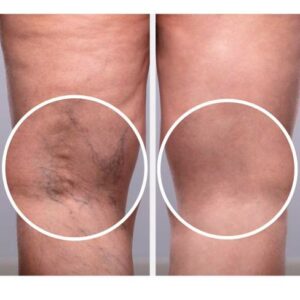
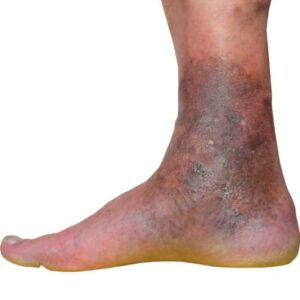

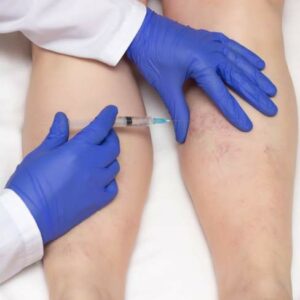
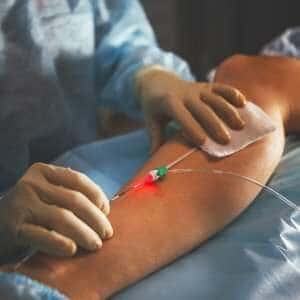

HOW ARE VARICOSE VEINS TREATED?
For those struggling with varicose veins, a common concern is whether these veins can be successfully treated. Fortunately, there are various treatment options, including EVLA, foam sclerotherapy or phlebectomy, depending on the severity of the condition. Each treatment aims to seal off the affected veins, offering relief and enhancing appearance.
SCLEROTHERAPY
Sclerotherapy involves injecting a solution, often in the form of foam, directly into the affected vein. This solution causes a reaction with the vein wall, leading to inflammation and scarring, which redirects blood flow to healthier veins. Eventually, this process closes off the vein, and the collapsed vein is reabsorbed into the surrounding tissue, gradually fading away. After undergoing sclerotherapy, the treated veins typically shrink and disappear within a few weeks, though it can sometimes take a month or longer to see the full results. The procedure is usually performed under local anaesthetic, allowing you to go home the same day.
EVLA
Endovenous Laser Ablation (EVLA) is a modern, minimally invasive procedure used to treat varicose veins. It works by using laser energy to heat and seal off the damaged vein, which then collapses and is gradually absorbed by the body. During the treatment, a small laser fibre is inserted into the vein using ultrasound guidance. The laser is activated to close off the vein. Blood is naturally redirected to healthier veins, improving circulation.
This procedure is usually done with local anaesthesia, and most patients can resume their normal activities shortly afterwards. EVLA is a safe and effective alternative to more invasive surgeries for varicose vein treatment.
MICROSCLEROTHERAPY
Microsclerotherapy is an effective treatment for thread veins and varicose veins. It involves injecting a liquid directly into the veins, which destroys them and causes them to disappear. This non-surgical procedure only requires an injection into the treatment area. After the treatment, compression must be worn for a few weeks to allow the body time to transform the affected vein into scar tissue.
PHLEBECTOMY
Phlebectomy, also known as stab avulsion, microphlebectomy or ambulatory phlebectomy is a technique used to remove varicose veins. In this procedure, one or two small incisions are made in the skin to identify, cut and remove the affected vein using a suction device. The treatment can be performed under either local or general anaesthetic. Some bleeding or bruising may occur in the weeks following the procedure.
FREQUENTLY ASKED QUESTIONS
WHAT ARE THE CAUSES OF VARICOSE VEINS?
HOW TO PREVENT VARICOSE VEINS?
WHAT ARE THE SYMPTOMS OF VARICOSE VEINS?
Varicose veins can present a range of symptoms, including:
- Prominent and bulging veins – Swollen and twisted veins, typically blue or dark purple, visible just beneath the skin.
- Leg swelling – Swelling in the legs or ankles, especially after prolonged standing or sitting.
- Heavy or aching legs – A sensation of heaviness or discomfort, often more noticeable at the end of the day.
- Changes in skin colour or texture – The skin near affected veins may darken, harden, or even develop sores or ulcers over time.
- Pain or throbbing – A burning or throbbing pain in the legs.
- Itchiness around the veins – The skin surrounding the varicose veins may become itchy or irritated.
- Leg cramps – Muscle cramps or restlessness, particularly at night.
WHEN TO BE CONCERNED ABOUT VARICOSE VEINS?
WILL VARICOSE VEINS GO AWAY ON THEIR OWN?
HOW LONG DOES IT TAKE TO RECOVER FROM VARICOSE VEIN TREATMENT?
REQUEST A CALL BACK
Please fill in this form and one of our team will give you a call back to arrange a consultation with one of our expert dermatologists.
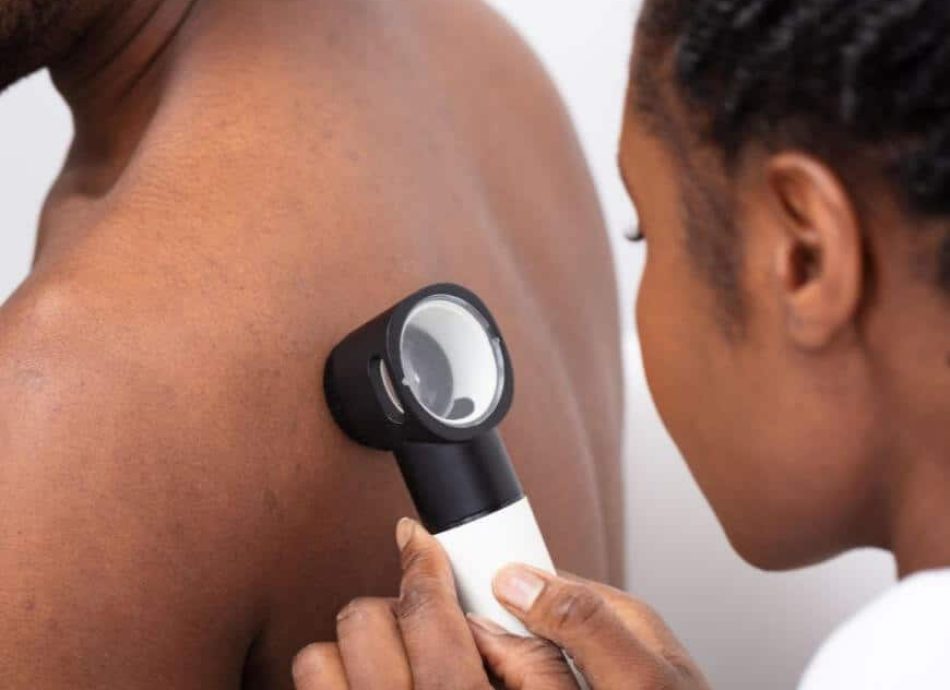
VARICOSE VEINS treatment near me in manchester
We treat and remove varicose veins in our Manchester, Shrewsbury, Cheltenham and Birmingham clinics. To book an appointment at either clinic, please call 0800 048 9230. Our team will guide you through the process and schedule a consultation with our specialist vascular surgeon for varicose vein treatment. We offer a Free Scan worth £500 with every consultation booked.
At Everything Skin Clinic™, we have a team of highly trained professionals who specialise in treating varicose veins. All of our consultants have undergone extensive training and are registered with the General Medical Council, holding key positions at leading NHS hospitals. This ensures our patients receive the highest quality varicose vein treatment in Manchester.
We offer a comprehensive range of varicose vein treatments, including EVLA, foam sclerotherapy and phlebectomy. Unlike many other clinics, we provide both diagnosis and treatment in one place, with expert care from our consultant dermatologists, so you can feel confident you are in safe hands.
